Presentation Zen: Simple Ideas on Presentation Design and Delivery, 2nd Edition (Ira Katz's Library) (27 page)
Authors: Garr Reynolds

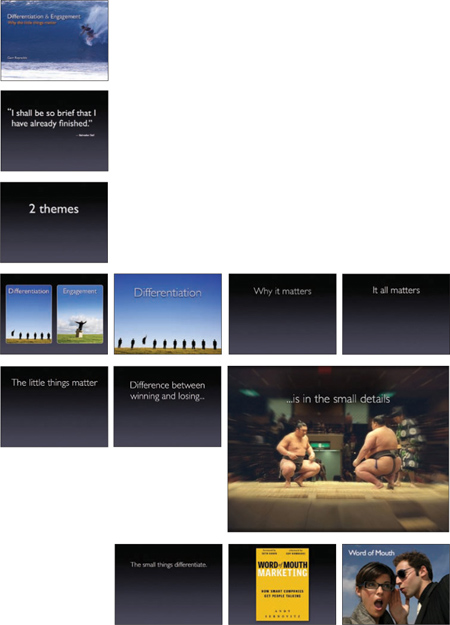
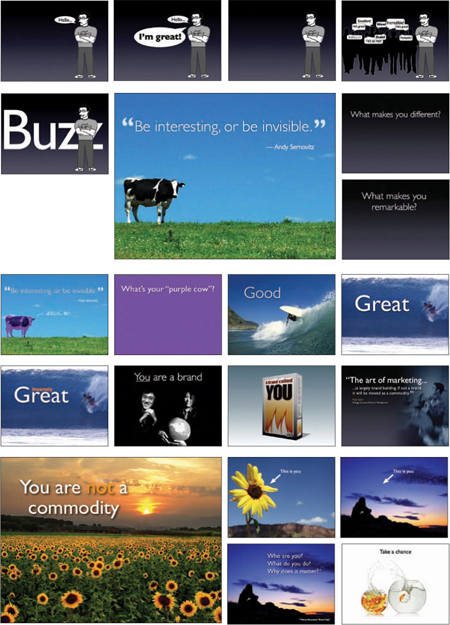
Jeff Brenman
Founder and CEO, Apollo Ideas
www.apolloideas.com
The slides for this presentation are a stylized version of a slideshow originally created by Karl Fisch to examine globalization and America’s future in the 21st century. It’s designed for online viewing; in a live talk, however, some of the text could be removed to make the slides a better complement to the speaker’s words. You can find all the slides used in this presentation on Slideshare.net:
You can see an official update to the original Shift Happens video presentation from Karl Fisch and Scott McLeod on Wikispaces.com:
www.shifthappens.wikispaces.com
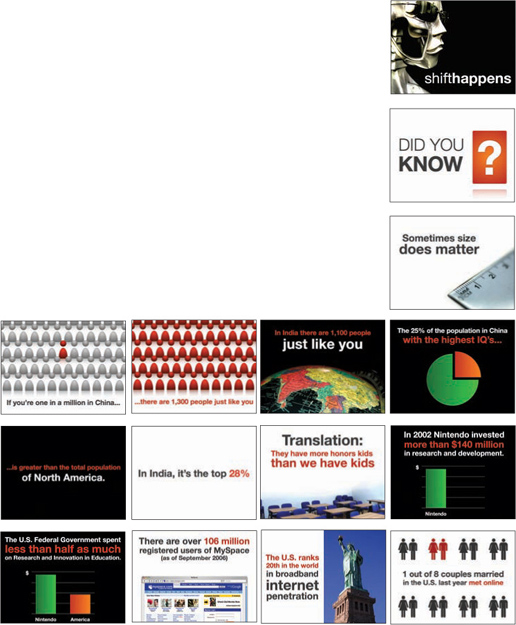
*First Prize, Slideshare’s World’s Best Presentation Contest (2007).
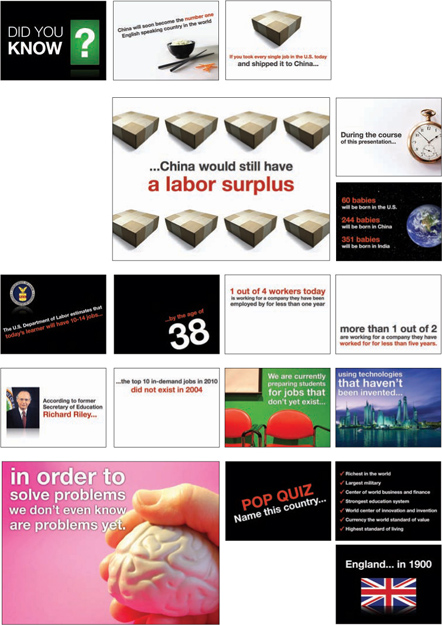
Chris Landry
Director of Development & Communications, Sustainable Food Laboratory
www.sustainablefoodlab.org
The slides shown here are part of a modified slide deck Chris Landry uses for talks about his organization and the work it does to bring more sustainability to mainstream food systems. Chris added a bit more text to these slides so they make a little more sense when viewed without narration in printed form, but the visuals were originally created to augment his live talk. You can find all the slides used in this presentation on Slideshare.net:
www.slideshare.net/chrislandry
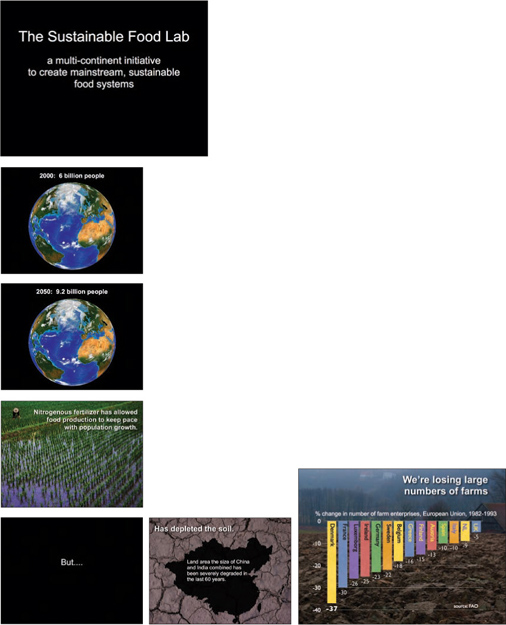
*Third Prize, Slideshare’s World’s Best Presentation Contest (2007).

Dr. Aisyah Saad Abdul Rahim
Lecturer in Pharmaceutical Chemistry,
School of Pharmaceutical Sciences Universiti Sains Malaysia
www.pha.usm.my/pharmacy/Aisyah2006.htm
The visuals shown here are typical of the lecture slides Dr. Saad uses in her Pharmaceutical Chemistry classes in Malaysia. These slides are samples from her lecture on “Aromatic Chemistry.” The black-and-red slides serve as a historical introduction to benzene while the second group illustrates the four essential features of aromatic compounds.
“I teach ‘Aromatic Chemistry’ to pharmacy students,” says Dr. Saad. “Mindful of Asian students’ penchant towards rote learning, I decided to apply the Presentation Zen approach in my lectures. The first few lectures had the students baffled because they could hardly jot down any notes. Later, they figured out that they had to pay more attention to my lectures. I use the Presentation Zen approach because it appeals to me visually and provides an amazing way to make students listen and understand more in lectures rather than just copying down notes off my slides.”

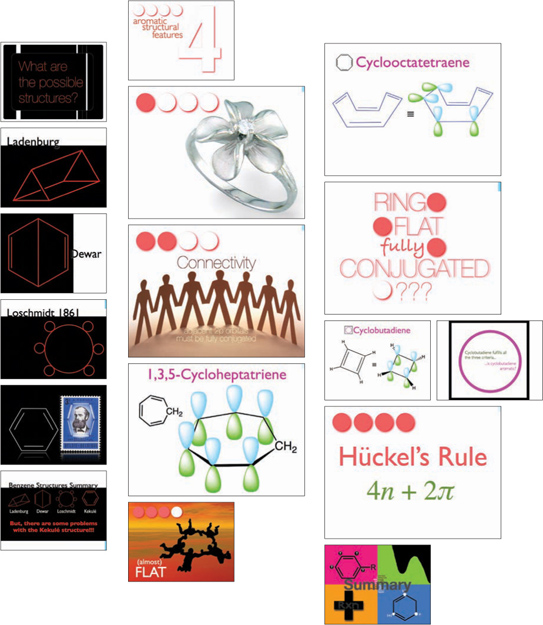
Sangeeta Kumar, M.Ed.
Education Coordinator, People for the Ethical Treatment of Animals
www.peta.org
In her position as education coordinator for People for the Ethical Treatment of Animals, Sangeeta Kumar travels a lot and gives highly visual presentations on animal-based issues. The sample slides on this page are from a presentation called “Animal Rights and Wrongs.” The slides on the opposite page are from her “Vegetarian is the New Prius” talk.
“When dealing with a complex or controversial issue, it is important to communicate your ideas in a way that the audience can relate to and visualize,” Sangeeta says. “In these examples, rather than relying on bar graphs or heady quotes, I use engaging photographs and easy-to-understand facts to help the audience visualize how their food choices impact animals and the environment.”
See more designs by Sangeeta on her corporate website:


Doctor Impresses Crowd at Medical Symposium
Andreas Eenfeldt is a young, 6′8″ medical doctor from Sweden who is very interested in presenting differently. I first met Andreas at one of my Presentation Zen seminars in Paris. He is a good example of someone doing important work and making an impact, using his knowledge and experience to challenge conventional wisdom and create a dramatic change. “It’s time for a health revolution,” he says. To create this revolution, he realized early on that engaging presentation skills were necessary to spread the word. Recently, Andreas gave an impressive presentation at the Ancestral Health Symposium 2011.
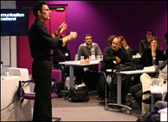
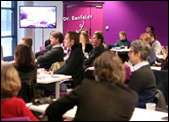
I liked Andreas’s AHS 2011 presentation, which got a lot of attention, for many reasons. The presentation had a good flow and structure that provided enough evidence to support his statements. He provided personal stories of his friends balanced with data and quotations from credible people in the field that supported his idea. He also told personal stories. Andreas was not always such an engaging presenter, so I asked him about his transformation:
“Fall-asleep-boring presentations are no exceptions in the medical field—they are the norm. This is good news, of course, because even small improvements are all that’s needed for presentations to stand out today. Back in 2008, I had started to do more and more presentations on low carb nutrition. It was then pointed out to me that just reading to the audience from my slides was not optimal. My presentation skills back then (just three years ago) were as bad or worse than your average MD’s. I started Googling and watching some YouTube videos on the subject. Pretty soon I ended up on the Presentation Zen website and have probably read every post on the site and read all of the
Presentation Zen
books and Nancy Duarte’s books and most of the books recommended on presentationzen.com. I have also lectured about 150 times in Swedish since then, and four times in English. So, in just three years my presentation skills improved from awful to pretty decent (even in my second language). Makes me wonder what my talks are going to be like 10 years from now.”
For preparation, Andreas says he brainstormed using sticky notes on his whiteboard, and then filtered out the most important points, arranging them into groups, creating messages, and organizing them in the best order. The opposite page shows a few of his more than 100 slides used in the 45-minute presentation.
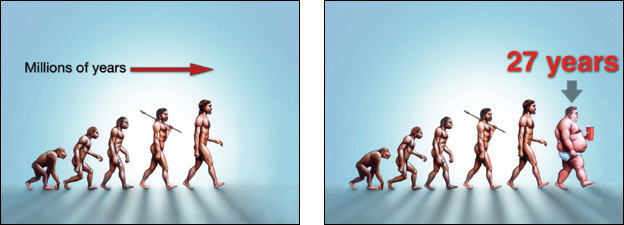
These two visuals are from early in his presentation—the exposition stage—where he introduces the problem. That is, that the obesity epidemic is a recent phenomenon.
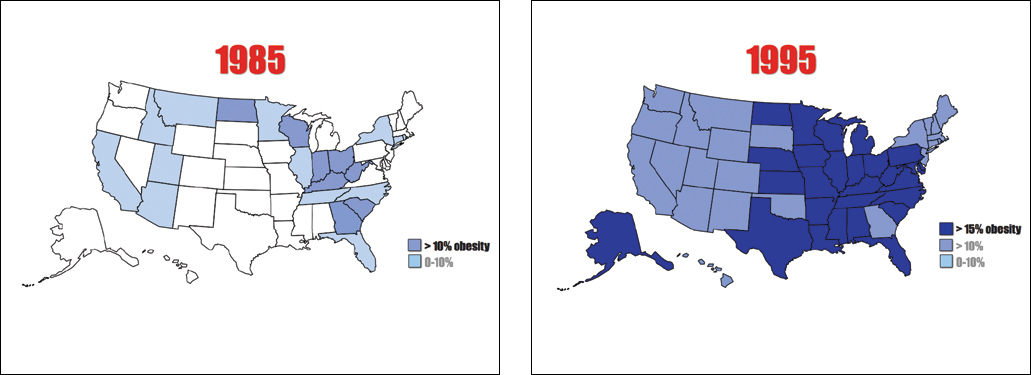
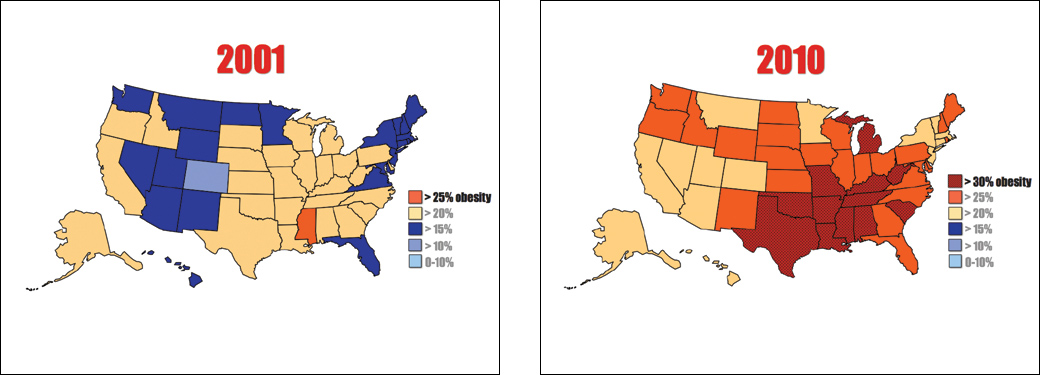
The doctor then used statistical evidence from the CDC over 14 slides (four of which are shown here) featuring a map of the United States that changes to reflect in a clear and visceral way the dramatic increase in obesity over a 27-year period.

A useful presentation technique is to use quotes from credible sources to support your assertions. Andreas displayed quotes a few times in this talk—in large type with key phrases highlighted, producing a very simple and clear design that was easily seen from the back of the hall.
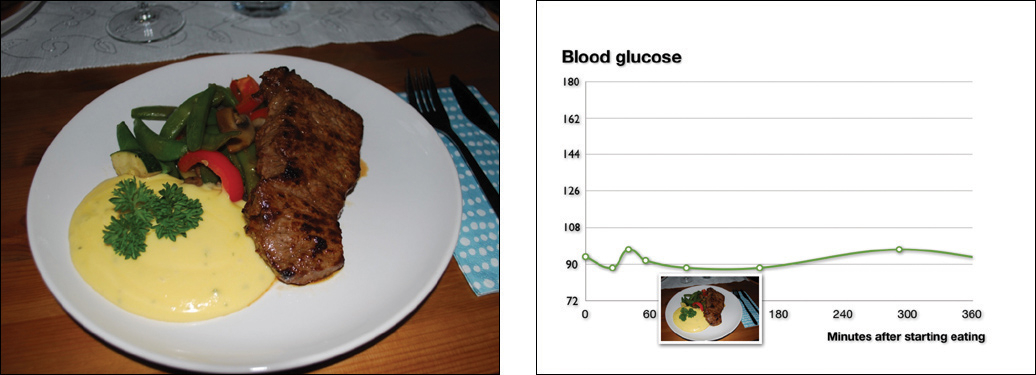
The doctor shares a personal example, shown here. After a home-cooked LCHF (low carbohydrate high fat) meal in Sweden, he tested his blood glucose, which remained rather stable as shown clearly in the simple chart.
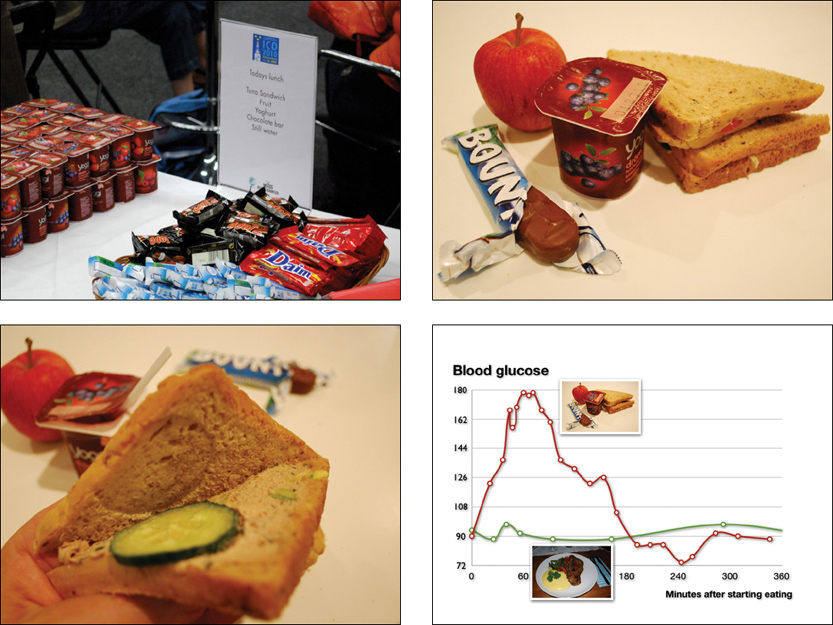
Then, Andreas went on to compare his LCHF meal to a high carb lunch with loads of sugars that he was served—ironically enough—at an obesity conferense in Stockholm. While this example is just his personal experience, it very much resonated with the audience. A very simple, clear, and visual explanation.